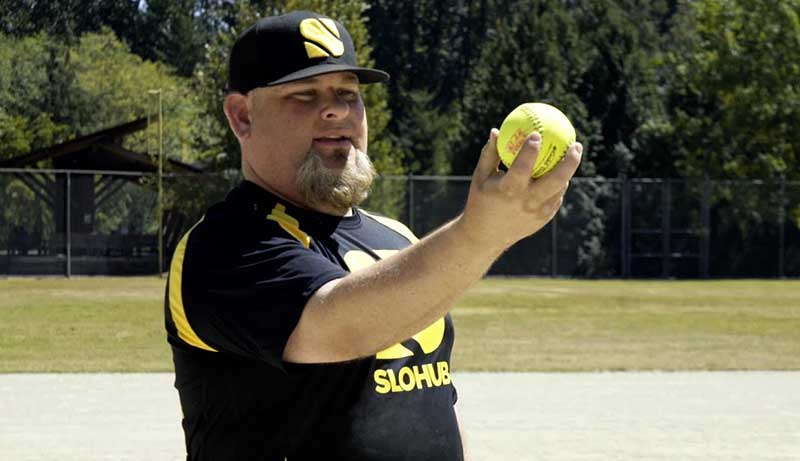The softball landscape has undergone substantial growth since its debut in the 1996 Olympics, establishing its unique fan base distinct from baseball. In the United States alone, approximately 30 million individuals actively participate in softball, marking a remarkable achievement.
However, a prevalent misconception remains, as many softball enthusiasts consider batters to be the game’s focal point. This perspective overlooks the crucial role played by all facets of the game, encompassing hitting, pitching, and fielding, in securing victory. Understanding the art of slow-pitch softball pitching significantly enhances your team’s chances of success.
In light of this, I’ve crafted a straightforward, step-by-step tutorial to guide you through the nuances of slow-pitch softball pitching. Winning in softball requires proficiency across various aspects, and mastering the art of pitching is a pivotal element.
Let’s embark on this journey together and revel in the nuances of the game!
Required tools for successful pitching
Becoming an effective pitcher is a gradual process that demands continuous practice. While skill and enthusiasm are crucial, possessing the necessary gear is equally vital for success.
Before delving into the pitching process, it’s essential to identify the prospective equipment. Here’s what you need:
Softball:
Without a softball, playing softball is impossible. Ensure you have the right-sized softball before initiating your pitching practice. It’s the primary prerequisite, and without a flawless softball, progress is futile.
Gloves:
Some athletes neglect gloves during practice, which is a critical mistake. Even in practice, always gear up as you would for an actual softball game. Wearing gloves during practice ensures comfort and prepares you for the real game.
Home Plate:
The ball lands at the home plate, so having a sturdy plate that can withstand quick throws is crucial. If possible, practice with a catcher to simulate game scenarios effectively.
Pitcher’s Plate:
A rectangular piece of white material, usually rubber, serves as the pitcher’s plate. It is 6 inches wide and 24 inches long, needing secure attachment to the surface for stability.
Safety Gear:
Safety equipment is essential to protect against unexpected hazards. Unfortunately, some pitchers overlook using safety gear during training. It’s a critical aspect; always wear protective gear, including a helmet, chest protector, shin guards, and neck guards, to safeguard against potential accidents. Prioritize your safety – injuries during practice can hinder your performance in competitions.
These constitute the primary safety and essential tools. Ensure you have all these gears before moving on to the main pitching session.
How to Pitch Slow Pitch Softball

Pitching in slow-pitch softball demands a nuanced approach, and it’s not simply a matter of throwing a ball randomly. The techniques involved differ significantly from baseball pitching. Let’s delve into the step-by-step guide for slow-pitch softball pitching.
1. Position Yourself:
- Stand on the pitcher’s plate, facing the home plate with your back to it.
- Step back with your dominant foot (right foot for most people) while keeping your non-dominant foot (left foot) in the back.
- Ensure your body is slightly pointing towards home plate, and keep your knees relaxed to avoid issues.
Note: Find a comfortable stance if the prescribed position feels uneasy.
2. Hold the Ball:
- Use your glove on your non-dominant hand and hold the ball with your dominant hand.
- Make complete contact with the ball using your fingers and palm.
- Press your palm against the ball’s surface, positioning your thumb and index finger parallel to the seams.
- The remaining fingers can be placed naturally, ensuring the ball can be pressed down with enough force using the thumb and index finger.
Note: While the described technique is recommended, you are free to hold the ball as you find comfortable.
3. Swing the Arm:
- Place your hand next to your hip, keeping it at waist height.
- Maintain a 90-degree angle between your hand and body.
- Swing your hand forward and upward to generate the force needed to toss the ball.
- Continue practicing the swing until you get accustomed to the motion.
4. Throw the Ball:
- Release the ball precisely when your arm crosses your thigh.
- Aim to maintain the ball’s proper trajectory toward your target.
- Execute the throw as quickly as possible, avoiding excessive speed that could lead to warnings from the umpire.
5. Practice Again:
- Pitching in slow-pitch softball requires consistent practice.
- Even with near-flawless pitching, continuous training is essential to become a master pitcher.
- Embrace repeated repetition to hone your skills and enhance your pitching abilities. Keep practicing!
Final Thoughts
With this, we wrap up our exploration into the essentials of slow pitch softball pitching. You likely noticed that mastering slow pitching is straightforward, requiring only your commitment and the ability to learn consistently.
Keep in mind that once you’ve honed your skills in slow pitching, you’ll be pleasantly surprised by the significant impact you can have on your team’s success.
Persistence and dedication are your allies on the path to success. Keep working hard, and success will follow!





Leave a Reply